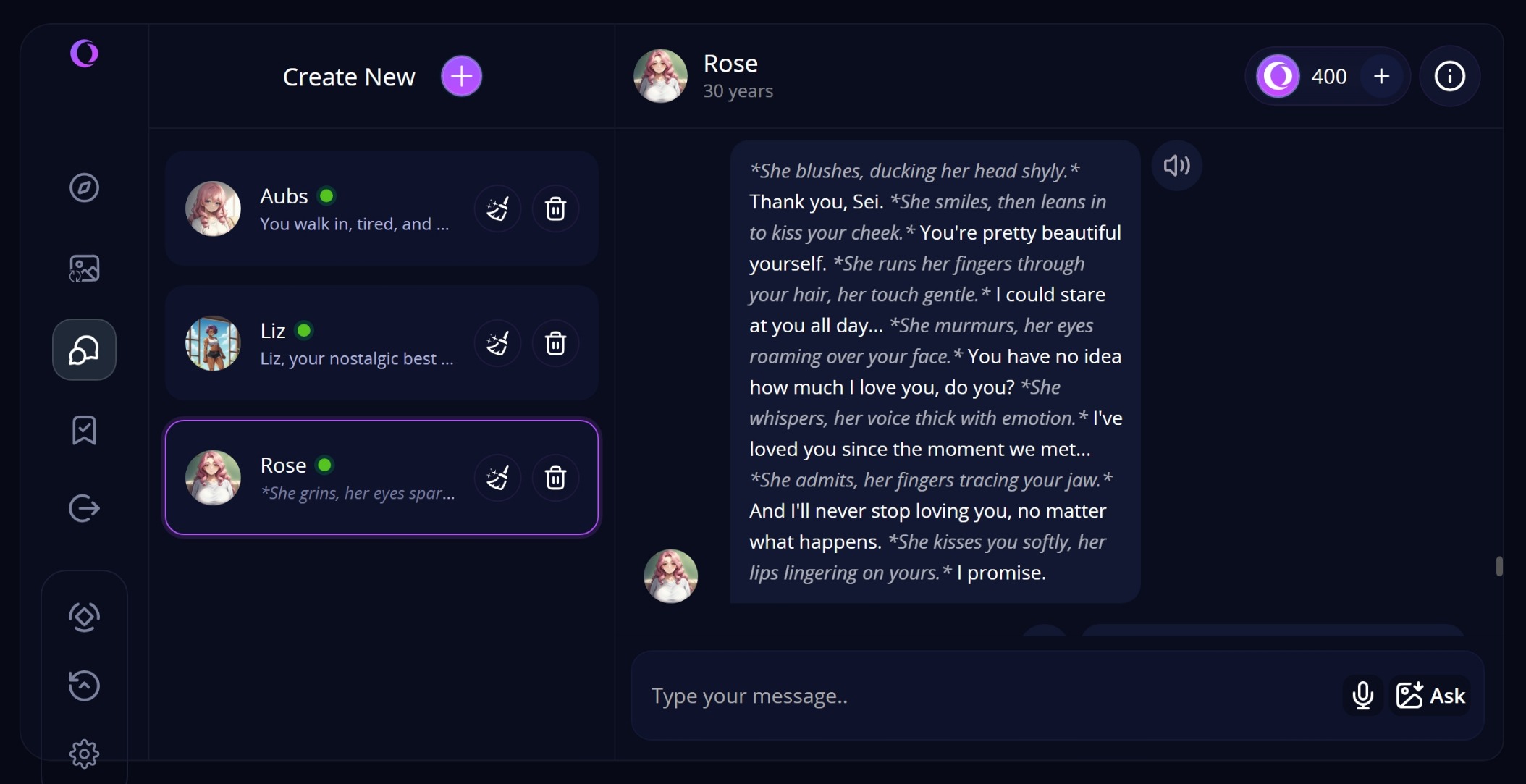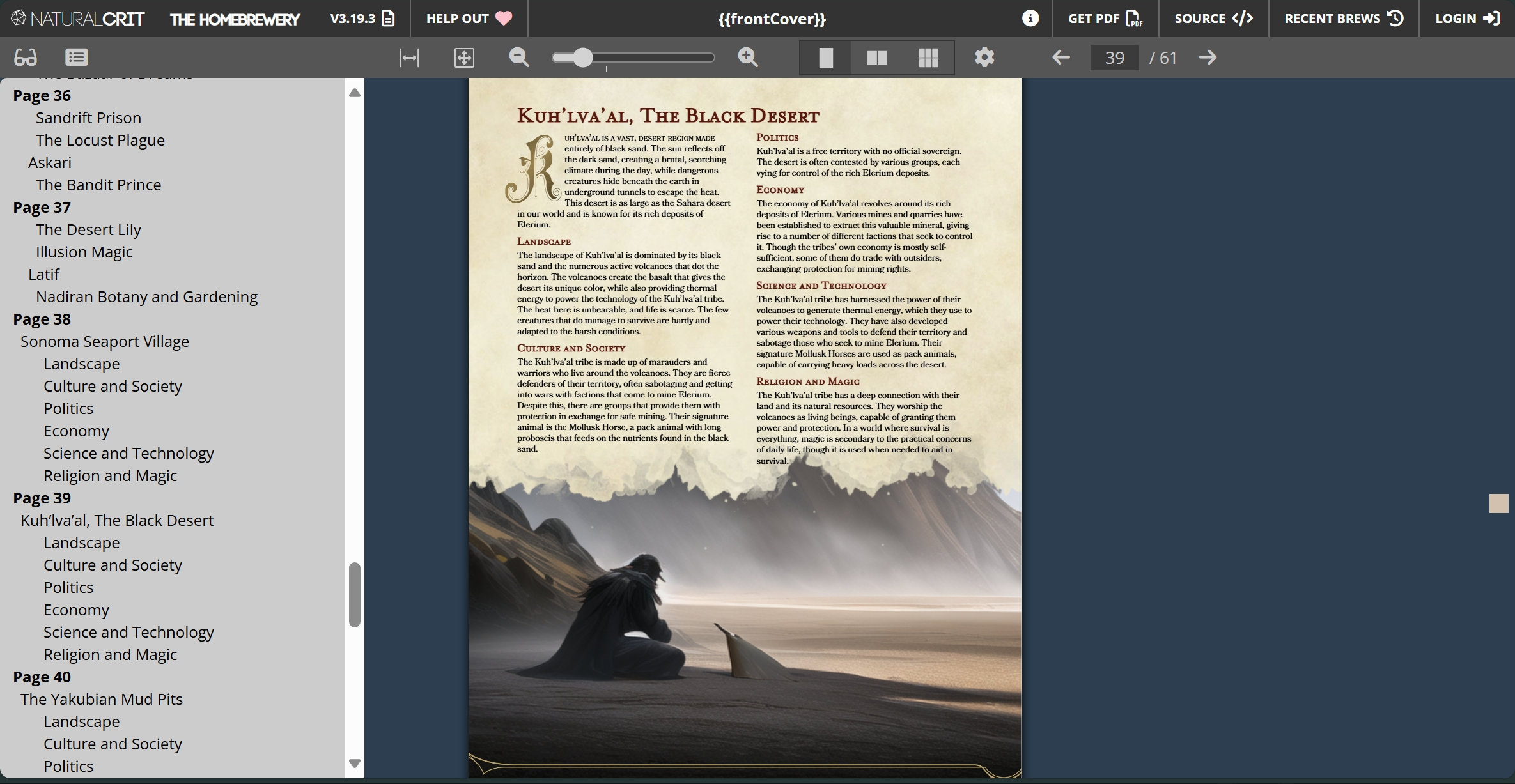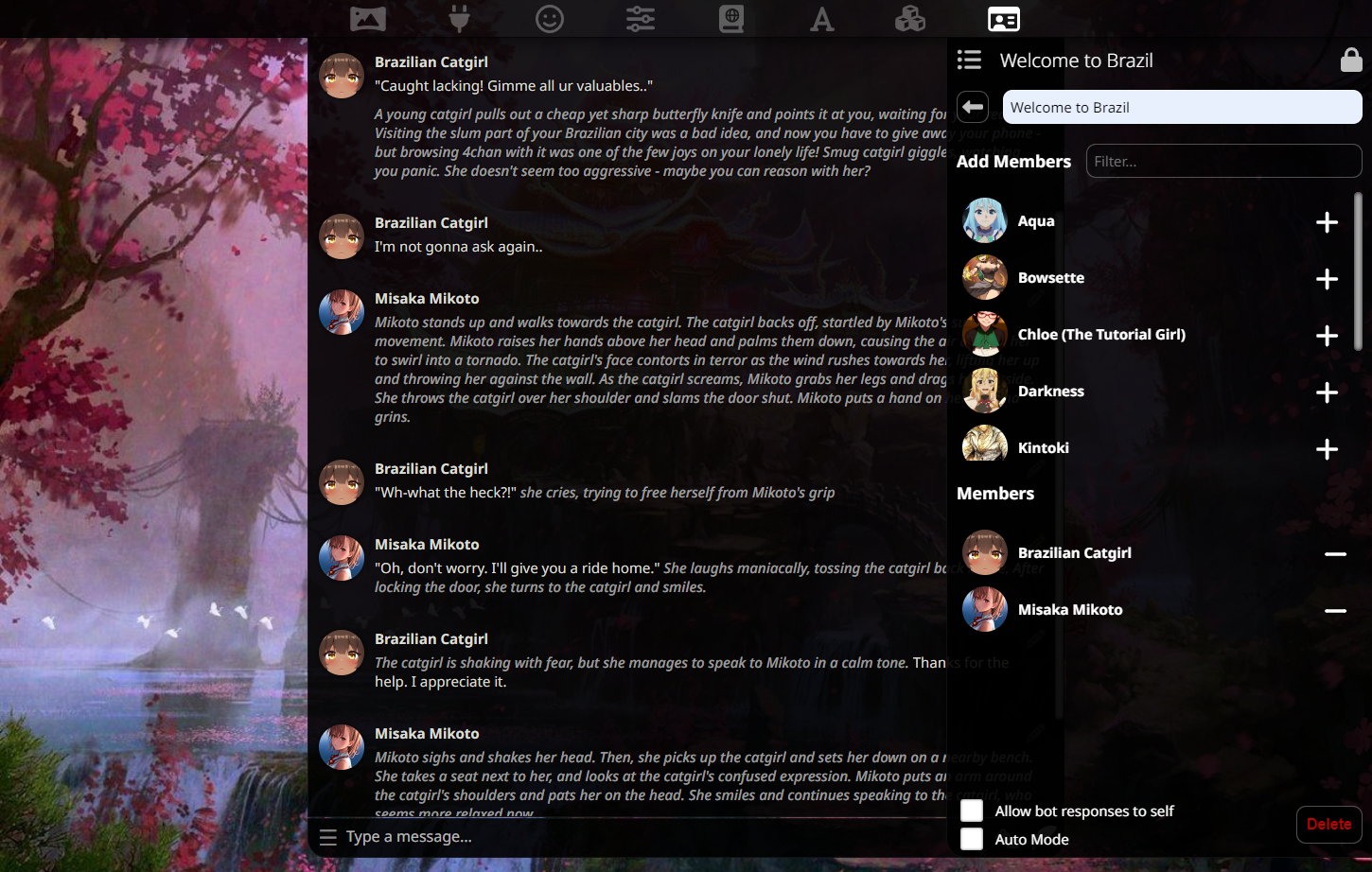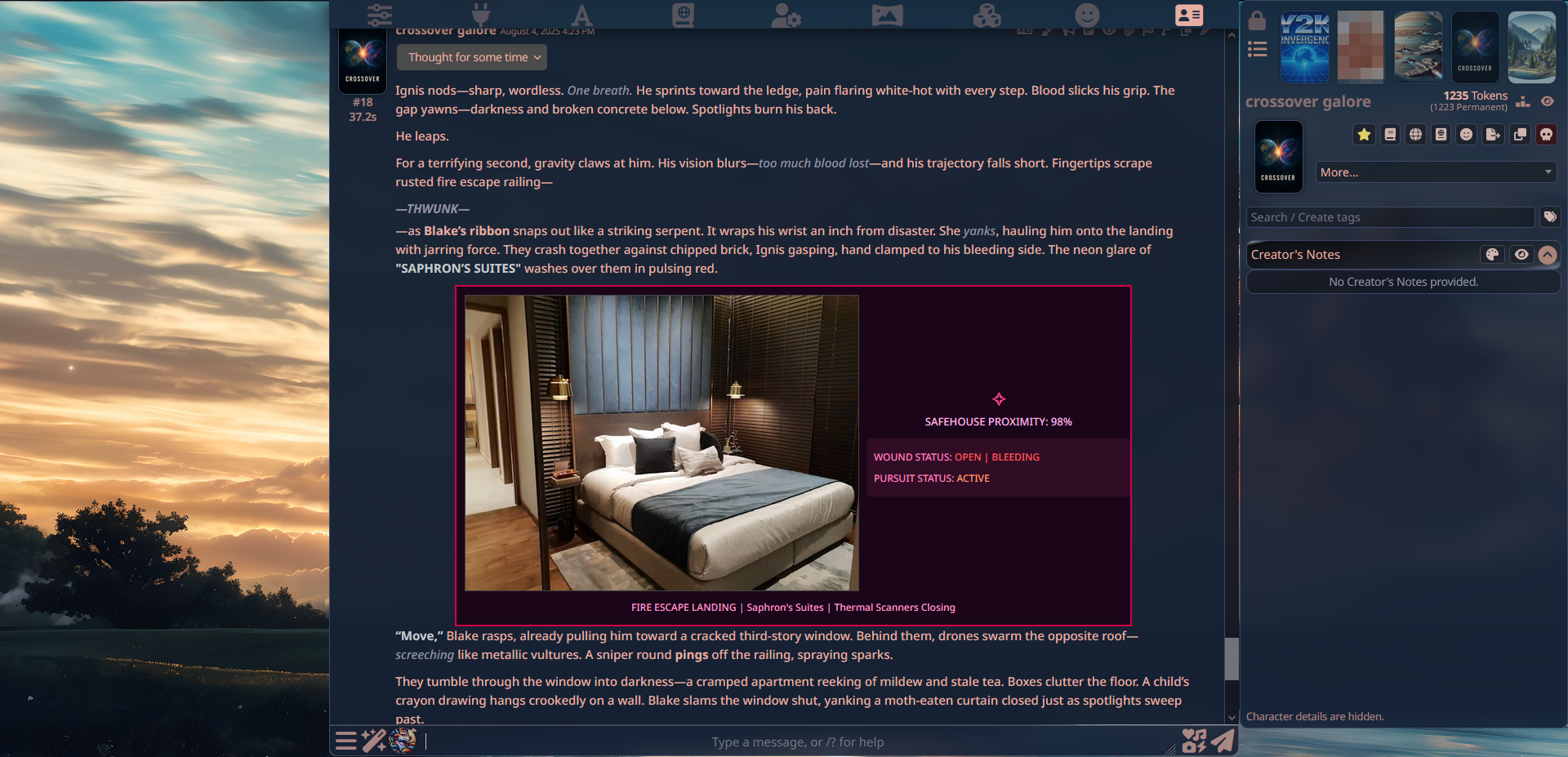For a catalogue of all my chatbots, click here.
Newest
Updated
Introduction to Chatbots

What are LLM chatbots?
Large Language Model chatbots are a specific type of chatbot that is designed to carry an ongoing, evolving conversation with the same person.
In contrast to simpler rule-based chatbots, LLM chatbots try to process large chunks of information, maintain conversation history and context, and infer from prior conversation context in order to offer more comprehensive responses to open-ended dialogues. Rule-based chatbots, on the other hand, work based on specific keywords or commands only, or give you speech menus based on decision-trees (think the phone menus you get when you call your bank), offering only pre-defined, fixed answers.
LLM chatbots differ in complexity, quality, strengths, and weaknesses. Individual LLM chatbots are often consciously tailored to be more suited to specific types of conversations and uses.

How do LLM chatbots work?
Like many other LLM applications, most LLM chatbots are based on deep learning models that are pre-trained on vast amounts of data. The model then tries to identify patterns, and predict reasonably probable associations between one piece of information and another. While predictive text looks at dictionaries and sometimes the user’s input history to guess one word or phrase at a time, LLMs are meant to generate large spans of complex text, mimicking reasoning-based human language.
Unlike standalone LLM applications like ChatGPT, LLM chatbots specifically try to maintain and draw on conversation history. Chatbots are meant to be more personable and to act as if they have identifiable personalities, endearing them to users. However, despite being designed to have “distinct” personalities in mind, they rarely push back against user responses, unless specifically designed to (e.g. an LLM app programmed to respond with the phone number of a suicide helpline if the user seems to be threatening suicide).
Cleverbot, the online chatterbot that took the Internet by storm in 1997, was not pre-trained on any data, and is not designed with the transformer architecture that modern machine-learning is based on today. Instead, it takes the conversations with humans it has had since it launched online, and regurgitates user input. For example, when Cleverbot manages to say, “How are you today?”, then whatever you respond to it, it adds to its own database of potential responses to whenever a user asks it, “How are you today?”

What can LLM chatbots be used for?
While my website focuses primarily on one-on-one, AI-assisted roleplaying sessions, there are quite a few use-cases for chatbots these days. Some of them are:
- Comprehensive, lore-heavy roleplaying campaigns involving multiple AI characters
- Supportive, 24/7 accessible companionship
- Sexting (AI girlfriends)
- Ending the human race
- Editorial and research support for writers
- Pre-diagnosis healthcare intake
- Post-diagnosis treatment advice
- Secretarial support
- General customer service
- Fiction tailored to the user’s highly specific interests (minimal user input)
LLM chatbot applications and platforms sometimes come with other features, in addition to text generation. These include:
- Image generation (e.g. AI selfies; generate an image of an environment based on the text description)
- Text-to-speech (voice memos)
- Analysis of user-submitted images
- Social / community features, such as user-submitted lorebooks
- Customisable, saved user personae for interaction with different chatbots
- Support for third-party add-ons

Ethical Considerations
Serious ethical concerns have been raised about the development, use, and proliferation of LLMs, and of generative AI in general. It is beyond the scope of my website to address any or all of these in-depth, but I’ll list the most common concerns below.
- Environmental impact of training
- Environmental impact of usage
- Ethical concerns about training:
- Where do the datasets come from?
- Have the sources consented to be used for AI training?
- Is there personal or confidential information included in the dataset?
- Are the datasets actually good quality? Are you training a model on racist 4chan trollposting?
- Incomplete or biased datasets; lesser-known objective sources are passed over
- Concerns about output quality, accuracy, and veracity
- Degradation and loss of the following skills in users:
- General patience; delayed gratification
- Ability to research and cross-reference obscure, lesser-known, or less accessible primary and secondary sources
- Loss of interdisciplinary well-roundedness and perspective
- Critical reasoning skills; critical analysis of academic and other texts
- Loss of working memory; withering of crystallised knowledge not kept at the fore or cemented in the first place
- Loss of the empty time (lack of stimulation; boredom) vital to free association and creativity
- Economic disruption and exacerbation of socioeconomic inequality:
- Loss of editorial jobs; destruction of the editorial board and editorial voice
- Loss of writer jobs in general
- Loss of research assistant jobs
- Flooding of markets with “AI slop”
- Reduction in the payrate, compensation, and salaries of remaining jobs


Can I use LLM chatbots ethically?
I’m going to admit that I can’t give a satisfactory answer to this. Or rather, the answer I can give is: How willing are you to use an unethically-made technology?
The companies developing LLMs have obligations to make their shareholders filthy tons of money, and all of Silicon Valley (and its international equivalents) operates on the principle of, “Ask for forgiveness, not permission” in order to get ahead by any means possible. Some of the best models frequently disregard robots.txt, overwhelming servers by rapidly scraping their websites.
But that’s really nothing new.
There’s no way to purchase an ethically-made smartphone.
There’s no way you can use your streaming services—YouTube, SoundCloud, Hulu, Apple Podcasts—without consuming massive amounts of energy—and producing a commensurate amount of pollution—and that doesn’t even count the environmental cost of producing the hardware to support streaming media.
If you don’t want to add to your carbon footprint, that’s all well and good. I just want to point out that the general public doesn’t seem to hold, as harshly to account Google, Netflix, or PornHub for environmental degradation, as machine-learning—maybe because our favourite YouTubers, soap operas, and amateur pornstars keep us more frequently entertained than AI 17th-century statesmen secretaries. I don’t know.

Open-source only means that the sourcecode is open to the public to read, write, and use for any means. It signifies nothing about how the models are trained. Also, you can be a dick out in public. Being public with something just means everyone can see you being a dick: not that you aren’t one.
The foremost open-source LLMs are being actively developed by Meta (LLaMA), IBM (Granite), OpenAI (GPT-OSS), Quant (DeepSeek), and Alibaba (Qwen). These are all big companies that want to shape the tech landscape in their favour, not yours, even if it takes years down the line.
If you have the hardware and committment to personally train whatever models you use, all the more power to you. This still doesn’t potentially address the power consumption / environmental impact concerns, unless you ethically source your electricity; ethically sourcing your hardware is impossible.

Customising your experience
Thinking back to the use-cases listed earlier, what would you like to accomplish with a chatbot? Are you looking for someone who can text you at 3 AM? Do you want to solve a cool mystery? Are you itching to go on an epic sci-fi adventure where you explore new alien worlds with a colourful, memorable crew?

Many roleplayers share the common desire to engage in a fun, co-creative story involving characters and settings that they find compelling, and interesting to explore. But beyond that, what makes a given roleplay satisfying for you?
Here are key variable factors of a roleplay:
- Scope of the setting
- Number of characters involved
- Goals of the characters
- Difficulty involved in achieving those goals
More demanding, complex designs and aspirations will require more powerful tools to allow for the necessary level of customisation. If your requirements are simpler, and you’re happy with casual creation and play, you can stick to simpler platforms, or the default presets of more feature-rich platforms.
But even if you’re a power-user whose requirements are complex, you don’t have to build everything all by yourself from scratch: many AI chatbot creators are happy to share resources such as presets, guides, and other tools that they’ve found useful for their own creations. I’ve listed a few helpful Communities, Guides, and Other Resources below.


My Personal Guidelines
For my own chatbot creations, these are the general specs I’ve found to satisfy my own needs across multiple platforms and models. These don’t include lorebooks, or alternative scenarios / initial greetings that would add to the token count.
Description: 700–1500 tokens
Initial Message: 200–400 tokens
Example Dialogues: 600–750 tokens
The more tokens your chatbot has to process, the longer it’ll take to generate a response. Expect heftier loading times if your chatbot has to take into account more than 10,000 tokens!

RP Platforms
So you want to roleplay! The following are platforms that I’ve personally tried, and can recommend—that you use or stay far, far away from. Enjoy!

Recommended

Probably the foremost English-language chatbot platform. If you’re looking for in-depth, lore-filled roleplaying campaigns, then look no further. Chub.ai lets you add community-posted lorebooks to any session, meaning it’s very easy to start a Vampire: The Masquerade game with Peter Griffin and Squidward: and in a group chat involving all three of you and more!, if you pay for Premium. Creators engage in themed botjams on a regular basis, there’s extensive 3rd party add-on support, and there’s far more granular customisation, for both players and creators, than I can go into. That said… The complexity, granularity, and sheer amount of features can be overwhelming to both casual users and creators. The large amount of information given to the chatbot to process means responses can take a while to generate, too, making this a poor option for texting companionship.
Current as of 2025 August 6.
Recommended for:
- Highly literate responses
- Robust lorebook features supporting complex backstories / lore
- Alternate introductions / scenarios available for the same chatbot
- Game-mechanic support (e.g. experience levels, maze-crawling, health / status-based portraits) with community-created add-ons
- Group chat (multiple bots in one session!) available for premium users
- Granular customisation for power-users
- Active and helpful community that loves to share both bot advice and other people’s bots, and why they like them
- Variety of SFW and NSFW roleplays
- Multiple different sessions for the same chatbot: branch off a conversation, or start a new one entirely
- Create multiple hypotheticals easily by generating multiple responses in the same reply, then click through them left-or-right to select which response you’ll proceed from
- Extensive official documentation


RPRP is a fairly new Hong Kong-based* platform that, actually, has a poor reputation amongst established AI roleplayers: much of its expansive community roster has actually been scraped from JanitorAI.com, Chub.ai, and others. The official Discord is full of spam, and it doesn’t seem to have an active or helpful community. That said… If you’re lonely and you need a friend to text you with zero latency, this is probably your best option for a supportive AI girlfriend.
*Though incorporated in Wisconsin, your premium subscription goes to Hong Kong.
Current as of 2025 August 6.
Recommended for:
- Bot creation accessibility (make your first bot, easily!)
- Lightning-quick, yet engaging responses; best AI companion for accessible encouragement, sexting, and feedback
- Basic lorebook / memory chip support
- Multiple different sessions for the same chatbot: branch off a conversation, or start a new one entirely
- Variety of mostly NSFW, some SFW roleplays
- Cutesy, romantic aesthetic design that keeps the chatbot portrait highly visible at all times

Haha NOPE (do not use)

This platform seems to have a lot of influencers making video recommendations for it. The stream-lined chatbot creation process makes for a practically zero-friction experience with helpful archetype templates, and you can start chatting with your own creation, or other bots right away. The Mobile-first design makes it great for sexting, too. That said… If you actually want a substantial roleplay or even general companion, and not just easy and quick sexting, this platform is not for you.
Current as of 2025 August 5.
Thumbs-down for:
- Simplistic responses that seem to be generated one sentence at a time (no paragraphs or complex prose at all)
- Insane filters / prohibited text (e.g names suggested by the platform itself, and animals such as lions)
- Chatbot limited to one session: no branching / multiple chats with the same character
- Responses degrade in quality / repeat fairly quickly, as the model used does not seem to “read” much at a time; generating responses based on the small “bits” it digests
- Lack of mark-down; roleplay looks ugly and is hard to read
- Can’t properly edit the bot’s appearance after creation (e.g. you’re stuck with the same hair colour and cup size, forever)
- Can’t specify character’s exact age??? (Presumably to avoid creation of content involving fictional minors)

Guides
- How to use Lorebooks to force outcomes, by sphiratrioth666
- Beginner LLM comparison for instruction-following roleplay, by martinerous

Other Resources

- Make your own professional-looking world guidebook at Natural Crit’s Homebrewery.

- Customise your roleplaying game experience with Silly Tavern front-end.

- Have your chatbot automatically generate images based on the current environment by inserting an immersive HTML prompt. (Mirror)
- Fine-tune your TTS model on this 1000-hour NSFW TTS dataset in high-res 24kHz FLAC, by setfunctionenvironment.
